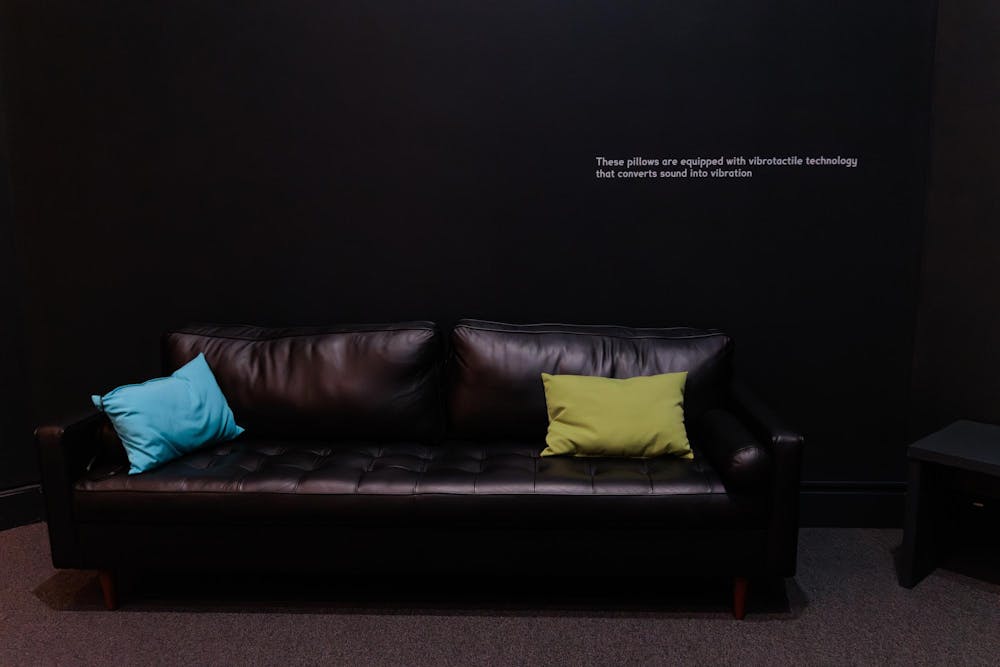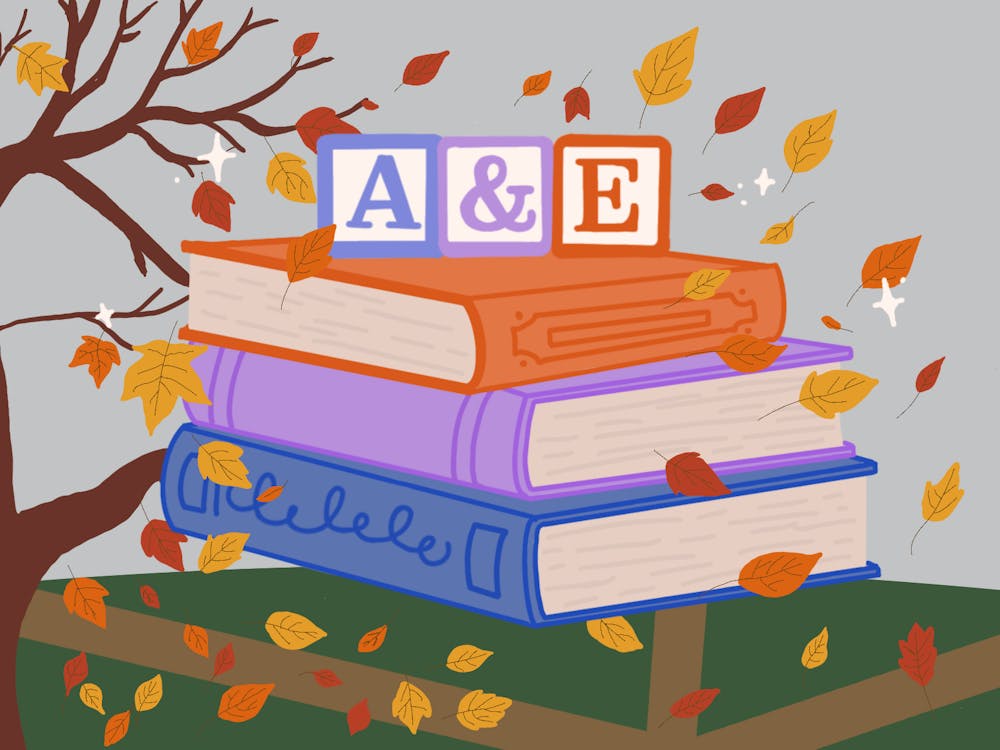“In Feeling: Empathy and Tension Through Disability” at the Fralin Museum of Art does not look like the everyday art exhibit — in fact, upon visiting, museumgoers might ask themselves where the art is. The exhibit opened Aug. 30 and explores how we empathize with others, highlighting the experiences of lived disability through different mediums such as space, music, video, text and drawing.
By accessing multiple senses and drawing on intimacy and empathy, “In Feeling” goes above and beyond to connect viewers to each other and to the experiences of others. Ainsley McGowan, chair of the Fralin student docent program and fourth-year College student, described what it is like to experience the work.
"You start to think about how you've taken for granted just being able to walk into a museum, and be comfortable, and stand and walk around for two hours and not need to use the one bench that may be available," McGowan said.
“Perspective” by Molly Joyce — one of the curators of the exhibit and fourth-year PhD student in music — was the original piece around which the exhibit was curated. The boundary-pushing art is an 18-minute, 30 second video that she describes as featuring voices and viewpoints of the disability community.
There are several iterations of the work spanning locations from Washington, D.C. to Dusseldorf, Germany, but the one on display at the Fralin is unique — to create the work, Joyce localized it to Charlottesville residents and University students and faculty, asking questions that she felt were central to the disabled experience.
“What is rest for you?” she asks at the beginning of the work.
The video is paired with a bench equipped with vibrotactile technology that converts sounds into vibration, creating an environment where one can feel, as well as hear, the art. Joyce, who identifies as disabled herself, said that her own acceptance of her disability led to an expansion of her artistic practice.
“I think, more publicly, kind of coming out as disabled, and especially collaborating with other disabled artists and so forth, definitely opened up new avenues for collaboration and thinking about disability,” Joyce said.
Joyce’s own artistic practice parallels the curatorial vision she brought to the exhibit. During the curation of the exhibit, Joyce mentioned that many of the artists she reached out to were from her personal network collaborators, all of whom publicly identify as disabled. She wanted the exhibit to have art across a variety of mediums and disciplines and asked the artists if they had any pieces of art that centers around the ideas in “Perspective.”
“I think from the start, we knew we wanted to only have disabled artists or artists that publicly identify as disabled,” Joyce said. “It really was artist-led in that way, like choosing artists that we found interesting, and trying to get artists across a range of disciplines.”
Empathy and intention with disability were themes that Joyce wanted to highlight in the curation of the exhibit and are clear from the moment you enter. Immediately upon entering the exhibit, viewers can see a table set with various cards and hourglasses, as well a rectangular mat set upon the floor, with circular markers on it indicating distance. These works are entitled “wrestling embrace (deck)” and “wrestling embrace (index)” by artist Jeff Kasper, whose works often feature instructional text that prompt relationship building and serious play.
The art is a set of interactive exercises on cards, designed to be used with a partner on a soft mat. The cards prompt deeper dialogue between those who choose to participate, exploring themes of vulnerability and access to intimacy.
“Hold a distance of no more than 2 feet,” reads one card. “As often and as naturally as you can, let your partner know: ‘we’re in this together and I’m not going anywhere.’”
McGowans emphasized how the exhibit goes beyond traditional interactive approaches.
“With the docent program, we try to make things as interactive as they can be,“ McGowan said. “But this level of interaction, I haven't seen before … not only is it interactive, but there's so many different ways you can interact.”
Other opportunities for viewers to interact can be found in works such as “A New Self Portrait” and “Landing Site” by Andy Slater, a Chicago based artist who is blind. The viewer can engage with the work by putting on a set of headphones and pressing a button. Upon doing this, they will hear descriptive audio and alternative text describing the works. Slater converts access itself into art and asks a non-disabled audience to put themselves into different shoes.
“This is my face, I know what I look like, but proving it is a challenge,” Slater says in “A New Self Portrait.”
While Slater explores auditory access, artist Park McArthur adds a tactile dimension to her work. Viewers are encouraged to gently interact with her work "Polyurethane Foam.” The name of the work is fitting — it is a substantially large block of light green polyurethane foam, which the placard says is the material used in the artist’s everyday wheelchair. The tactile dimension makes the piece physically accessible, but also adds a personal depth of inclusion and disability from McArthur’s own experience.
Just steps away from “Polyurethane Foam,” visitors can find themselves in a dim, octagonal gallery vibrating with JJJJJerome Ellis’s “Sonic Bathhouse #2.” The room contains benches, couches, chairs and pillows that are also equipped with vibrotactile technology. On the walls are comforting mantras such as, “Rest is encouraged” and “Please stay as long as you wish.”
McGowan went on to elaborate on the thoughts that the exhibit provoked within her, and what audiences might expect to learn from viewing it.
“I think it really opens your eyes to how different people with different levels of mobility or ability interact with these quiet spaces,” McGowan said.
Among the works that provoke thought is Jerron Herman’s “LAX,” a video performance by the artist. Herman, a New York based dancer and playwright with cerebral palsy, dances between flow and staccato, asking through narration — “What if rest is the dance?” As the composer of the work’s text and audio score, Herman imbues the work with an intimately personal view of his experience with disability by blending choreography with text and music.
After the exhibit’s run at the Fralin is over, it’s expected to travel to other museums nationally, according to Joyce. Through its intentionally accessible design and focus on disability led artistry, the exhibit gives viewers more than a typical museum experience, leaving a lasting impression.
“I hope it does forge new connections for the Fralin and U.Va. overall, especially those that don't typically see themselves in a museum setting,” Joyce said.







